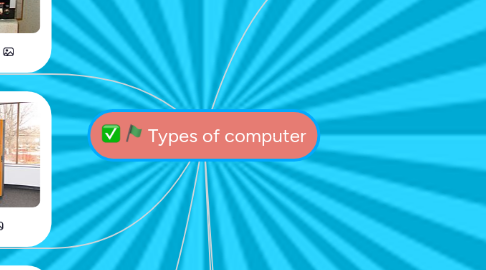
1. Personal computer
1.1. A small, single-user computer based on a microprocessor.
1.2. Tower model
1.2.1. The term refers to a computer in which the power supply, motherboard, and mass storage devices are stacked on top of each other in a cabinet. This is in contrast to desktop models, in which these components are housed in a more compact box. The main advantage of tower models is that there are fewer space constraints, which makes installation of additional storage devices easier.
1.3. Personal Computer Types
1.3.1. Desktop model
1.3.1.1. A computer designed to fit comfortably on top of a desk, typically with the monitor sitting on top of the computer. Desktop model computers are broad and low, whereas tower model computers are narrow and tall. Because of their shape, desktop model computers are generally limited to three internal mass storage devices. Desktop models designed to be very small are sometimes referred to as slimline models.
1.3.2. Notebook computer
1.3.2.1. An extremely lightweight personal computer. Notebook computers typically weigh less than 6 pounds and are small enough to fit easily in a briefcase. Aside from size, the principal difference between a notebook computer and a personal computer is the display screen.
1.3.3. Laptop computer
1.3.3.1. A small, portable computer -- small enough that it can sit on your lap. Nowadays, laptop computers are more frequently called notebook computers.
1.3.4. Subnotebook computer
1.3.4.1. A portable computer that is slightly lighter and smaller than a full-sized notebook computer. Typically, subnotebook computers have a smaller keyboard and screen, but are otherwise equivalent to notebook computers.
1.3.5. Hand-held computer
1.3.5.1. A portable computer that is small enough to be held in one’s hand. Although extremely convenient to carry, handheld computers have not replaced notebook computers because of their small keyboards and screens.
1.3.6. Palmtop
1.3.6.1. A small computer that literally fits in your palm. Compared to full-size computers, palmtops are severely limited, but they are practical for certain functions such as phone books and calendars.
1.3.7. PDA
1.3.7.1. Short for personal digital assistant, a handheld device that combines computing, telephone/fax, and networking features.
